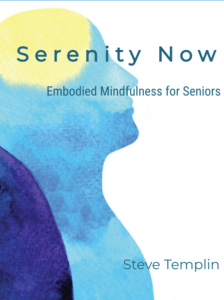Frequently chronic pain sufferers have tried the best that modern medicine has to offer, along with a variety of natural treatments, diets, and remedies without finding lasting relief. Often pain lingers in spite of our best efforts. Could we simply be missing the real cause of our pain?
A number of studies suggest that 50-100 million Americans are suffering from chronic pain. What have we missed? A part of the answer is that we focus on the body for solutions to pain, probably because we experience pain in the body.
The problem with the bodily oriented approach is that the majority of chronic pain, while experienced in the body, is in fact generated in the brain and autonomic nervous system.
For example, studies show that only 3-5% of chronic neck or back pain is caused by the spine, even in the presence of deteriorated discs or arthritic changes. These structural changes that accumulate with age akin to the gray hair of aging, but mostly of no consequence.
The real cause of most chronic pain is from stress-induced changes in brain circuitry that fuel stress chemistry, inflammation and chronic muscle tension. These stress-induced changes are commonly a combination of early life stress programming and present day triggers.
And if chronic pain wasn’t enough of a burden to bear, anxiety and frustration are frequently present if our search for relief has extended over time.
If we’re searching the internet for solutions it’s very common that our anxiety and frustration will grow along with the intensity of our symptoms. This happens because over concern or worry about our discomfort fuels the stress-induced neural pathways that are causing our pain.
The almost infinite reach of the internet has the potential to take us further and further away from ourselves and a likely solution for our pain.
Stress and the Brain: The Ignored Culprits
More and more, research is pointing to an overactive stress response and activated brain pathways as the underlying cause of much chronic pain, anxiety, and illness. Simply put, emotional stress programs the brain and nervous system to generate pain.
While everyone is vulnerable to the growing epidemic of stress-induced pain, anxiety, and illness, the individual with a highly sensitive brain and nervous system is even more vulnerable.
On more than one occasion I’ve referenced a 2004 study, sponsored by the National Institutes of Health (NIH) showing that 85% of doctor and hospital visits are due to the effects of chronic stress.
I believe that this potentially life changing information is usually ignored because most of us, including medical professionals, were never taught that it was okay to feel …. and most importantly …. to value our feelings. And many of us were punished or demeaned because of our expression of emotions.
It turns out that emotions that can be felt and ideally expressed are mostly innocuous. On the other hand, emotions that are ignored or suppressed can activate the brain circuitry that’s responsible for chronic pain and other chronic complaints.
Expressing Emotions Helps Significantly with Chronic Pain
One of the proofs of this novel concept is found in the clinical results and research around expressive writing. Joan Broderick, Ph.D. lead a notable study involving expressive writing and its benefit to those with fibromyalgia pain.
Furthermore, John Pennebaker, Ph.D. has conducted research for over thirty years showing that simply writing about feelings, getting pent up feelings out, is helpful for alleviating pain and other symptoms of stress-induced illness.
Additionally, John Sarno, M.D. and David Hanscom, M.D. have both written at length about the benefits of expressive writing for alleviating chronic pain. Dr. Hanscom was a leading spine surgeon at the Swedish Spine Institute in Seattle, Washington.
Mental and Emotional Self-Regulation to the Rescue
While some of us intuitively get the ’emotional stress’ and bodymind connection, we just don’t know what to do about it. We may not have the inner self-regulation skills that are needed to make a lasting difference.
Essentially, the stress response disturbs the functioning of the autonomic nervous system and the vagus nerve. The vagus nerve delivers the maintenance and repairs signals to our organs and tissues. When the vagus nerve is inactive our powers of innate healing, repair, and detoxification are inhibited. Our natural self-regulation has been disturbed.
If you turn off this health-promoting signaling for any length of time, pain and illness are the logical outcomes. This understanding helps to explain why so many well-intentioned attempts to heal with external remedies or a variety of healing techniques haven’t proven effective.
Since the stress response and its ill effects are a learned response, its resolution and our healing involve learning new ways to live inside of our own skin. In this instance, our capacity for self-regulation and subsequent healing is an inside job. The following quote is from my website.
“We were taught to ignore, control, or stuff our inner life of emotional experience and live in our heads … to disown our body’s feelings as if they didn’t matter …. and we have paid the price for this lack of self-awareness.
This disconnected, stress-inducing state is now shown to be the primary cause of most chronic pain and chronic illness.
Simply put, when our feelings are felt consciously they lead to nervous system balance, health, and wholeness … and when ignored are experienced as tension, pain, and illness. Our bodies are sending us a message.”
Ideally, this information will encourage you to look inside and honor your body’s own inner wisdom.
Expressive Writing Exercise
Here’s a simple expressive writing exercise called ‘Feeling, Want, Willing’ that you can experiment with:
- Feeling. Being writing freely about how you feel. Just get out the feelings that have been held in. Don’t worry about punctuation or grammar, just get it out. And after you’ve completed the exercise you can discard what you’ve written. No one but you will see what you’ve written. (Becoming conscious of inner emotional experience and giving it a voice through writing moves us from the limbic brain to the prefrontal cortex. We’re shifting from old conditioned responses in the limbic brain to new options for emotional and behavioral freedom in the prefrontal area.)
2. Want. After we’ve cleared the air with step one we’re ready to focus on what we really want for ourselves. In this step we’re consciously choosing what we really want to create in our life. Begin writing about what you want and how achieving that desire will make you feel. (This step facilitates a further shift from the right prefrontal to the left prefrontal area.)
3. Willing. Begin writing about what you will do to support the creation of your chosen goal. This is an action step like studying to gain expertise, practicing a new skill, or exercising on a daily basis.
(All of these steps combined remove the emotional fuel or kindling that fuels the brain circuitry responsible for chronic pain and many other stress-induced symptoms.


 Steve is a retired Doctor of Oriental Medicine, Acupuncture Physician, and HeartMath Trauma-Sensitive Certified Practitioner with over 35 years of clinical experience in the fields of Energy Medicine, Energy Psychology, and Biofeedback.
Steve is a retired Doctor of Oriental Medicine, Acupuncture Physician, and HeartMath Trauma-Sensitive Certified Practitioner with over 35 years of clinical experience in the fields of Energy Medicine, Energy Psychology, and Biofeedback. 